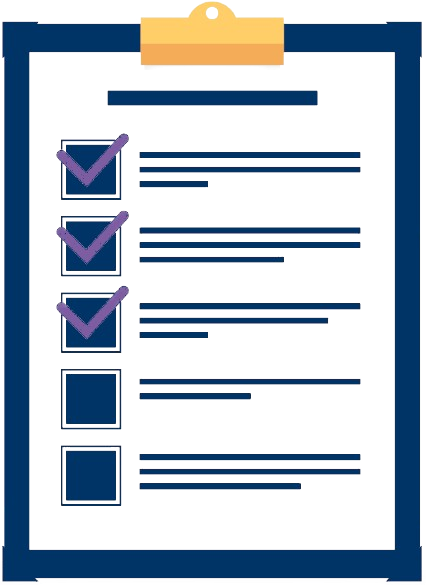Suggestions based on the Question and Answer that you are currently viewing
If a taxpayer has owned a building for 10 years and decides that it should make significant improvements to the building, what is the recovery period for the improvements?
If an entity has a mixed cost function, a 10 per cent increase in sales volume should increase income by more than 10 per cent. Explain why.
1. In which quarter of Exhibit 3.7 would you place Cam? What are some steps that you would recommend Cam consider to better connect with the employees who report to him?
Jada (age 53) and Elijah (age 60) are married, and both are self-employed. In 2024, they participate in a health insurance plan with a $3,000 annual deductible and out-of-pocket maximum of $9,000. The only other health plan they have is a vision insurance plan. Are they eligible to contribute to a health savings account? Why or why not. If so, what is their maximum HSA contribution and deduction?
Darby Sporting Goods Inc. has been experiencing growth in the demand for its products over the last several years. The last two Olympic Games greatly increased the popularity of basketball around the world. As a result, a European sports retailing consortium entered into an agreement with Darby’s Roundball Division to purchase basketballs and other accessories on an increasing basis over the next 5 years. To be able to meet the quantity commitments of this agreement, Darby had to obtain additional manufacturing capacity. A real estate firm located an available factory in close proximity to Darby’s Roundball manufacturing facility, and Darby agreed to purchase the factory and used machinery from Encino Athletic Equipment Company on October 1, 2013. Renovations were necessary to convert the factory for Darby’s manufacturing use. The terms of the agreement required Darby to pay Encino $50,000 when renovations started on January 1, 2014, with the balance to be paid as renovations were completed. The overall purchase price for the factory and machinery was $400,000. The building renovations were contracted to Malone Construction at $100,000. The payments made, as renovations progressed during 2014, are shown below. The factory was placed in service on January 1, 2015. 1/1 4/1 10/1 12/31 Encino $50,000 $90,000 $110,000 $150,000 Malone 30,000 30,000 40,000 On January 1, 2014, Darby secured a $500,000 line-of-credit with a 12% interest rate to finance the purchase cost of the factory and machinery, and the renovation costs. Darby drew down on the line-of-credit to meet the payment schedule shown above; this was Darby’s only outstanding loan during 2014. Bob Sprague, Darby’s controller, will capitalize the maximum allowable interest costs for this project. Darby’s policy regarding purchases of this nature is to use the appraisal value of the land for book purposes and prorate the balance of the purchase price over the remaining items. The building had originally cost Encino $300,000 and had a net book value of $50,000, while the machinery originally cost $125,000 and had a net book value of $40,000 on the date of sale. The land was recorded on Encino’s books at $40,000. An appraisal, conducted by independent appraisers at the time of acquisition, valued the land at $290,000, the building at $105,000, and the machinery at $45,000. Angie Justice, chief engineer, estimated that the renovated plant would be used for 15 years, with an estimated salvage value of $30,000. Justice estimated that the productive machinery would have a remaining useful life of 5 years and a salvage value of $3,000. Darby’s depreciation policy specifies the 200% declining-balance method for machinery and the 150% declining-balance method for the plant. One-half year’s depreciation is taken in the year the plant is placed in service, and one-half year is allowed when the property is disposed of or retired. Darby uses a 360-day year for calculating interest costs. Instructions (a) Determine the amounts to be recorded on the books of Darby Sporting Goods Inc. as of December 31, 2014, for each of the following properties acquired from Encino Athletic Equipment Company. (1) Land. (2) Buildings. (3) Machinery. (b) Calculate Darby Sporting Goods Inc.’s 2015 depreciation expense, for book purposes, for each of the properties acquired from Encino Athletic Equipment Company. (c) Discuss the arguments for and against the capitalization of interest costs. Angie Justice, chief engineer, estimated that the renovated plant would be used for 15 years, with an estimated salvage value of $30,000. Justice estimated that the productive machinery would have a remaining useful life of 5 years and a salvage value of $3,000. Darby’s depreciation policy specifies the 200% declining-balance method for machinery and the 150% declining-balance method for the plant. One-half year’s depreciation is taken in the year the plant is placed in service, and one-half year is allowed when the property is disposed of or retired. Darby uses a 360-day year for calculating interest costs. Instructions (a) Determine the amounts to be recorded on the books of Darby Sporting Goods Inc. as of December 31, 2014, for each of the following properties acquired from Encino Athletic Equipment Company. (1) Land. (2) Buildings. (3) Machinery. (b) Calculate Darby Sporting Goods Inc.’s 2015 depreciation expense, for book purposes, for each of the properties acquired from Encino Athletic Equipment Company. (c) Discuss the arguments for and against the capitalization of interest costs.
How would the principle of weighing up marginal costs and benefits apply to a worker deciding how much overtime to work in a given week?
How do legal corporations protect shareholders from liability? If you formed a small corporation, would you be able to avoid repaying a bank loan from your community bank if the corporation went bankrupt? Explain.
Wade Corp. has 150,000 shares of common stock outstanding. In 2014, the company reports income from continuing operations before income tax of $1,210,000. Additional transactions not considered in the $1,210,000 are as follows. 1. In 2014, Wade Corp. sold equipment for $40,000. The machine had originally cost $80,000 and had accumulated depreciation of $30,000. The gain or loss is considered ordinary. 2. The company discontinued operations of one of its subsidiaries during the current year at a loss of $190,000 before taxes. Assume that this transaction meets the criteria for discontinued operations. The loss from operations of the discontinued subsidiary was $90,000 before taxes; the loss from disposal of the subsidiary was $100,000 before taxes. 3. An internal audit discovered that amortization of intangible assets was understated by $35,000 (net of tax) in a prior period. The amount was charged against retained earnings. 4. The company had a gain of $125,000 on the condemnation of much of its property. The gain is taxed at a total effective rate of 40%. Assume that the transaction meets the requirements of an extraordinary item. Instructions Analyze the above information and prepare an income statement for the year 2014, starting with income from continuing operations before income tax. Compute earnings per share as it should be shown on the face of the income statement. (Assume a total effective tax rate of 38% on all items, unless otherwise indicated.)
Who issues commercial paper? Which types of financial institutions issue commercial paper? Why do some firms create a department that can directly place commercial paper? Which criteria affect the decision to create such a department? (LO1)
Assume Tamar uses the IRS method of allocating expenses to rental use of the property.
The stockholders’ equity accounts of G.K. Chesterton Company have the following balances on December 31, 2014. Common stock, $10 par, 300,000 shares issued and outstanding $3,000,000 Paid-in capital in excess of par—common stock 1,200,000 Retained earnings 5,600,000 Shares of G.K. Chesterton Company stock are currently selling on the Midwest Stock Exchange at $37. Instructions Prepare the appropriate journal entries for each of the following cases. (a) A stock dividend of 5% is declared and issued. (b) A stock dividend of 100% is declared and issued. (c) A 2-for-1 stock split is declared and issued.
Explain the general difference in the composition of pension portfolios managed by trusts versus those managed by insurance companies. Why does this difference occur? (LO6)
The financial statements of P&G are presented in Appendix 5B. The company’s complete annual report, including the notes to the financial statements, can be accessed at the book’s companion website, www. wiley.com/college/kieso. Instructions Refer to P&G’s financial statements and the accompanying notes to answer the following questions. (a) How does P&G value its inventories? Which inventory costing method does P&G use as a basis for reporting its inventories? (b) How does P&G report its inventories in the balance sheet? In the notes to its financial statements, what three descriptions are used to classify its inventories? (c) What costs does P&G include in Inventory and Cost of Products Sold? (d) What was P&G’s inventory turnover in 2011? What is its gross profit percentage? Evaluate P&G’s inventory turnover and its gross profit percentage.
If the government reduces the size of its public-sector net cash requirement, why might the money supply nevertheless increase more rapidly?
In some instances, accounting principles require a departure from valuing inventories at cost alone. Determine the proper unit inventory price in the following cases. Cases 1 2 3 4 5 Cost $15.90 $16.10 $15.90 $15.90 $15.90 Sales price 14.80 19.20 15.20 10.40 17.80 Estimated cost to complete 1.50 1.90 1.65 .80 1.00 Estimated cost to sell .50 .70 .55 .40 .60
When we were looking at wage rates, were we talking about the price of labour or the price of labour services? Is this distinction between the price of a factor and the price of factor services a useful one in the case of labour? Was it in Roman times?
reported the following data in its annual report. Feb. 27, Feb. 26, Feb. 25, 2010 2011 2012 Total revenues $40,597 $37,534 $36,100 Cost of sales (using LIFO) 31,444 29,124 28,010 Year-end inventories using FIFO 2,606 2,552 2,492 Year-end inventories using LIFO 2,342 2,270 2,150 (a) Compute SUPERVALU’s inventory turnovers for 2011 and 2012, using: (1) Cost of sales and LIFO inventory. (2) Cost of sales and FIFO inventory. (b) Some firms calculate inventory turnover using sales rather than cost of goods sold in the numerator. Calculate SUPERVALU’s 2011 and 2012 turnover, using: (1) Sales and LIFO inventory. (2) Sales and FIFO inventory. (c) Describe the method that SUPERVALU’s appears to use. (d) State which method you would choose to evaluate SUPERVALU’s performance. Justify your choice.
Are taxpayers allowed to deduct net capital losses (either net long-term capital loss in excess of net short-term capital gain or net short-term capital loss in excess of net long-term capital gain)? Explain.
Explain (using intuition instead of math) why stock prices may decrease in response to a higher risk-free rate according to the CAPM. In some periods, the risk-free rate rises in response to higher economic growth. Explain (using intuition instead of math) why stock prices may increase in this situation even though the risk-free rate increases. (LO2)
Jones Co. is in a technology-intensive industry. Recently, one of its competitors introduced a new product with technology that might render obsolete some of Jones’s inventory. The accounting staff wants to follow the appropriate authoritative literature in determining the accounting for this significant market event. Instructions Access the IFRS authoritative literature at the IASB website (http://eifrs.iasb.org/). (Click on the IFRS tab and then register for free eIFRS access if necessary.) When you have accessed the documents, you can use the search tool in your Internet browser to respond to the following questions. (Provide paragraph citations.) (a) Identify the authoritative literature addressing inventory pricing. (b) List three types of goods that are classified as inventory. What characteristic will automatically exclude an item from being classified as inventory? (c) Define “net realizable value” as used in the phrase “lower-of-cost-or-net realizable value.” (d) Explain when it is acceptable to state inventory above cost and which industries allow this practice.
The financial statements of Marks and Spencer plc (M&S) are available at the book’s companion website or can be accessed at http://annualreport.marksandspencer.com/_assets/downloads/ Marks-and-Spencer-Annual-report-and-financial-statements-2012.pdf. Instructions Refer to M&S’s financial statements and the accompanying notes to answer the following questions. (a) How does M&S value its inventories? Which inventory costing method does M&S use as a basis for reporting its inventories? (b) How does M&S report its inventories in the statement of financial position? In the notes to its financial statements, what three descriptions are used to classify its inventories? (c) What costs does M&S include in Inventory and Cost of Sales? (d) What was M&S’s inventory turnover in 2012? What is its gross profit percentage? Evaluate M&S’s inventory turnover and its gross profit percentage.
Winston Industries and Ewing Inc. enter into an agreement that requires Ewing Inc. to build three diesel-electric engines to Winston’s specifications. Upon completion of the engines, Winston has agreed to lease them for a period of 10 years and to assume all costs and risks of ownership. The lease is noncancelable, becomes effective on January 1, 2014, and requires annual rental payments of $413,971 each January 1, starting January 1, 2014. Winston’s incremental borrowing rate is 10%. The implicit interest rate used by Ewing Inc. and known to Winston is 8%. The total cost of building the three engines is $2,600,000. The economic life of the engines is estimated to be 10 years, with residual value set at zero. Winston depreciates similar equipment on a straight-line basis. At the end of the lease, Winston assumes title to the engines. Collectibility of the lease payments is reasonably certain; no uncertainties exist relative to unreimbursable lessor costs. Instructions (a) Discuss the nature of this lease transaction from the viewpoints of both lessee and lessor. (b) Prepare the journal entry or entries to record the transaction on January 1, 2014, on the books of Winston Industries. (c) Prepare the journal entry or entries to record the transaction on January 1, 2014, on the books of Ewing Inc. (d) Prepare the journal entries for both the lessee and lessor to record the first rental payment on January 1, 2014. (e) Prepare the journal entries for both the lessee and lessor to record interest expense (revenue) at December 31, 2014. (Prepare a lease amortization schedule for 2 years.) (f) Show the items and amounts that would be reported on the balance sheet (not notes) at December 31, 2014, for both the lessee and the lessor.
List the reasons for each of the three factors above. (Re-read section 10.2 and Box 10.7 if you need help.)
In each of the following independent cases, determine the taxpayer’s filing status and the number of dependents the taxpayer is allowed to claim.
A headline in the Wall Street Journal stated, “Firms Increasingly Tap Their Pension Funds to Use Excess Assets.” What is the accounting issue related to the use of these “excess assets” by companies?
The benefits of buying with AnswerDone:

Access to High-Quality Documents
Our platform features a wide range of meticulously curated documents, from solved assignments and research papers to detailed study guides. Each document is reviewed to ensure it meets our high standards, giving you access to reliable and high-quality resources.

Easy and Secure Transactions
We prioritize your security. Our platform uses advanced encryption technology to protect your personal and financial information. Buying with AnswerDone means you can make transactions with confidence, knowing that your data is secure

Instant Access
Once you make a purchase, you’ll have immediate access to your documents. No waiting periods or delays—just instant delivery of the resources you need to succeed.
